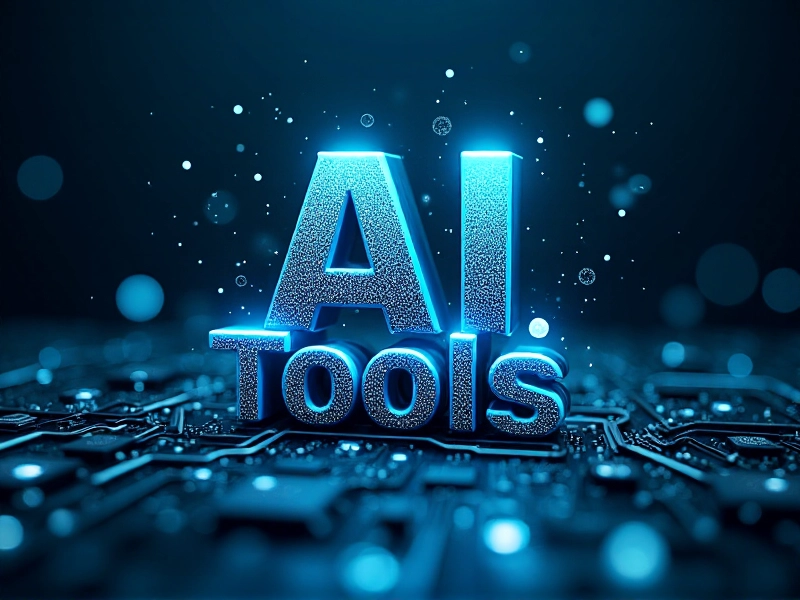Deepseek Tutorial: How to Get Started with AI-Powered Search

In an era where data is the new gold, finding the right information quickly can make or break your productivity. Enter Deepseek, an AI-powered search tool designed to transform how you discover, analyze, and act on information. Whether you’re a researcher, marketer, or business professional, this step-by-step guide will walk you through everything you need to know to master Deepseek and unlock its full potential.
Table of Contents
By the end of this tutorial, you’ll be equipped to harness Deepseek’s advanced features, from contextual searches to real-time analytics, and integrate it seamlessly into your workflow. Let’s dive in!
Introduction: Why Deepseek is a Game-Changer
Traditional search engines often leave users sifting through pages of irrelevant results. Deepseek changes the game by combining artificial intelligence, natural language processing (NLP), and machine learning to deliver precise, context-aware answers. Unlike keyword-based tools, Deepseek understands the intent behind your queries, whether you’re searching for academic papers, market trends, or technical documentation.
In this guide, you’ll learn:
How to set up your Deepseek account.
Tips for crafting effective AI-powered searches.
Advanced features like filters, analytics, and integrations.
Troubleshooting common issues.
Ready to become a Deepseek power user? Let’s get started.
Step 1: Setting Up Your Deepseek Account
1.1 Sign Up for Deepseek
Visit the Deepseek official website and click “Get Started” or “Sign Up.”
Choose between a free trial (ideal for individuals) or a business plan (for teams needing advanced features).
Enter your email, create a password, and verify your account via the confirmation link sent to your inbox.
💡 Pro Tip: Use a work email for business plans to streamline team onboarding later.
1.2 Customize Your Profile
After logging in, complete your profile to enhance personalization:
Industry: Select your field (e.g., healthcare, finance, tech).
Search Preferences: Specify default filters (e.g., date ranges, content types).
Integrations: Connect tools like Google Drive, Slack, or Microsoft Teams (optional).

1.3 Explore the Dashboard
The Deepseek dashboard is your command center. Key sections include:
Search Bar: Central hub for queries.
Recent Searches: Quickly revisit past searches.
Analytics: Visualize search trends and popular results.
Saved Results: Bookmark important findings.
Step 2: Performing Your First AI-Powered Search
2.1 Crafting Effective Queries
Deepseek thrives on natural language. Instead of typing “AI trends 2023 PDF,” ask:
“Find recent PDF reports on AI trends in healthcare published after January 2023.”
The more context you provide, the better the results.
2.2 Search Modes
Deepseek supports three search modes:
Text Search: Enter queries in plain language.
Voice Search: Click the microphone icon and speak your query (great for hands-free use).
Image Search: Upload or drag-and-drop images to find related content (e.g., identify a research chart).
2.3 Refining Results with Filters
Narrow results using filters:
Date Range: Limit results to the past week, month, or year.
Content Type: Filter by PDFs, articles, videos, or datasets.
Source Credibility: Prioritize peer-reviewed journals or trusted publishers.
🔍 Example:
Search: “Impact of remote work on productivity”
Filters: “Past 6 months,” “Peer-reviewed studies,” “PDF format.”
Step 3: Mastering Advanced Features
Real-Time Analytics
Deepseek’s analytics dashboard helps you track:
Popular Queries: What your team searches for most.
Trending Topics: Emerging themes in your industry.
Gaps in Data: Identify areas where information is lacking.
Use these insights to guide research or content strategies.
3.2 Custom Alerts
Set up alerts for specific keywords or topics. For example:
“Notify me about new AI ethics papers.”
“Alert when stock prices for Company X drop below $50.”
3.3 Collaborative Searching
Share search results with your team:
Click “Share” on any result.
Choose collaborators via email or integrated tools like Slack.
Add notes to highlight key takeaways.
Step 4: Integrating Deepseek with Your Tools
Deepseek’s API and plugins let you embed its power into your existing workflow:
Popular Integrations:
CRM Systems (e.g., Salesforce): Automatically pull customer data into searches.
CMS Platforms (e.g., WordPress): Use Deepseek to research and draft content.
Cloud Storage (e.g., Dropbox): Search across stored files without leaving Deepseek.
Building Custom Workflows
For developers:
Access the Deepseek API from the developer portal.
Use endpoints to fetch search results, analytics, or alerts.
Build custom apps, like a research assistant bot.
Step 5: Troubleshooting Common Issues
Slow Search Results:
Fix: Check your internet connection. Reduce filters or simplify queries.
5.2 Irrelevant Results:
Fix: Add more context to your query. Use the “Feedback” button to report issues—Deepseek learns from user input.
Step 6: Best Practices for Deepseek Mastery
Use Natural Language: Pretend you’re asking a colleague for help.
Leverage Filters Early: Save time by applying filters before searching.
Bookmark Frequently: Save key results to “Collections” for easy access.
Stay Updated: Deepseek releases new features monthly—check the blog or newsletter.
Conclusion: Transform Your Workflow with Deepseek
Deepseek isn’t just a search tool—it’s a productivity powerhouse. By understanding its AI-driven capabilities, you can cut through data noise, uncover hidden insights, and make decisions faster than ever.
By following this guide, you’re not just learning a tool—you’re future-proofing your workflow. Happy searching! 🚀
